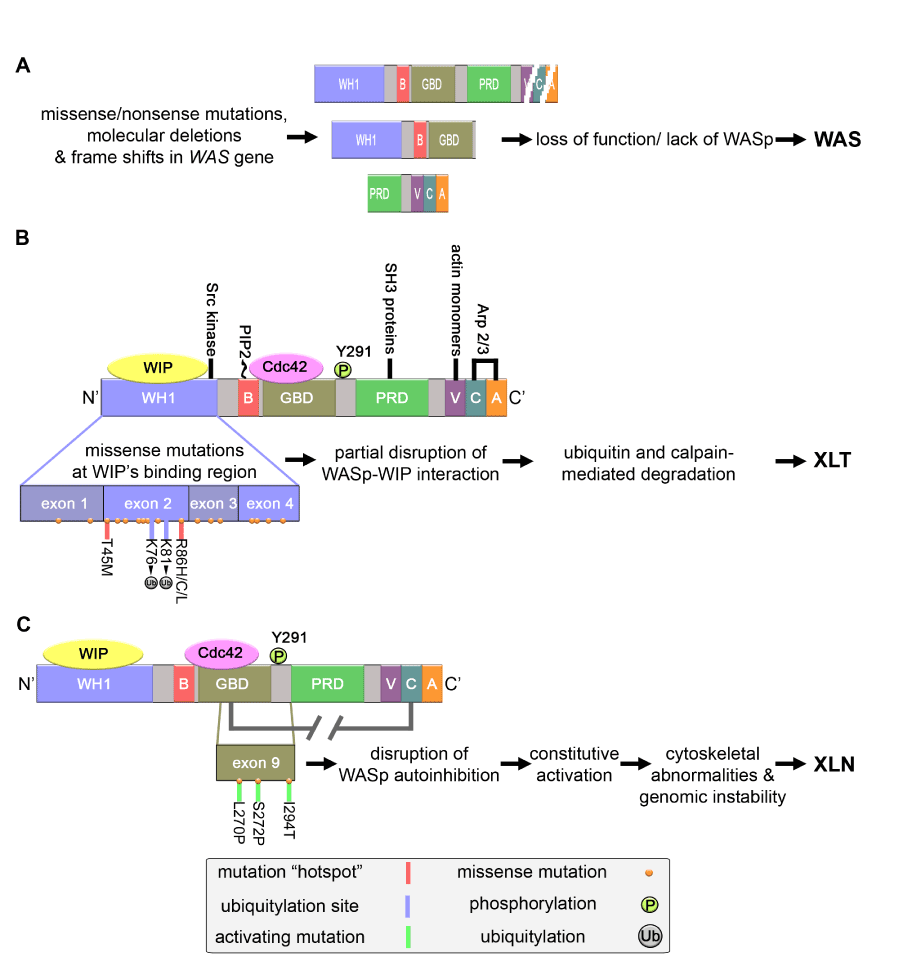
 |
| Figure 3: Molecular basis of WASp-related disease. Mutations and deletions of the WAS gene can lead to a wide spectrum of diseases: (A) WAS is resulted by various missense/nonsense mutations, deletions and frame shifts in the WAS gene, leading to WASp deficiency or dysfunction. (B) WIP protects WASp from ubiquitin and calpain protease-mediated degradation. Missense mutations at the WH1 domain of WASp disrupt the WASp-WIP interaction; WASp activation by the Rho GTPase Cdc42-GTP, and phosphorylation by protein tyrosine kinase, eventually result in WASp ubiquitylation at the lysine residues 76 and 81 and proteolysis by calpain. Enhanced degradation of WASp usually causes XLT. (C) XLN is caused by activating mutations in the VCA-binding region of the GBD, which disrupt WASp autoinhibition. Constitutive WASp activation leads to cytoskeletal abnormalities and genomic instability. |